Planning a trip to Amsterdam? Gail Ciampa has all the info on the fun food scene
Bitterballen, automats, stroopwafels, small beers, brown bars and cheese. What a different and fun food culture there is to discover in Amsterdam.
With just three days to enjoy in the Netherlands, we dove head first into a canal cruise aboard a small boat with Captain Sebastian. That began our Dutch culinary exploration. As we headed out into the evening, he served us shots of jenever, also spelled as genever in the U.S.
It only took one sip to remember I wrote about the spirit 10 years ago when I judged a United States Bartenders Guild contest at Twin River. Bols, the Dutch spirit company, was the sponsor.
Jenever is a Dutch grain-distilled spirit blended with juniper berries whose origins date back hundreds of years. It has the oomph of gin, but without all the botanical flavors. It's nice to sip or in a cocktail.
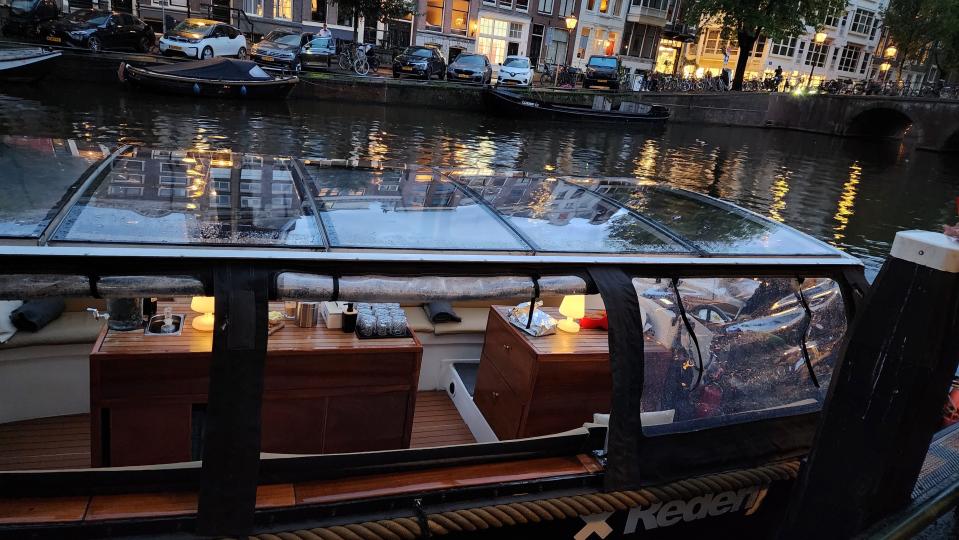
We enjoyed Dutch cheeses while the captain maneuvered through the canals, pointing out sites like the narrowest bridge and the oldest churches. It was so fun that we could see into many of the homes and houseboats along the canals and see people settling in for the evening.
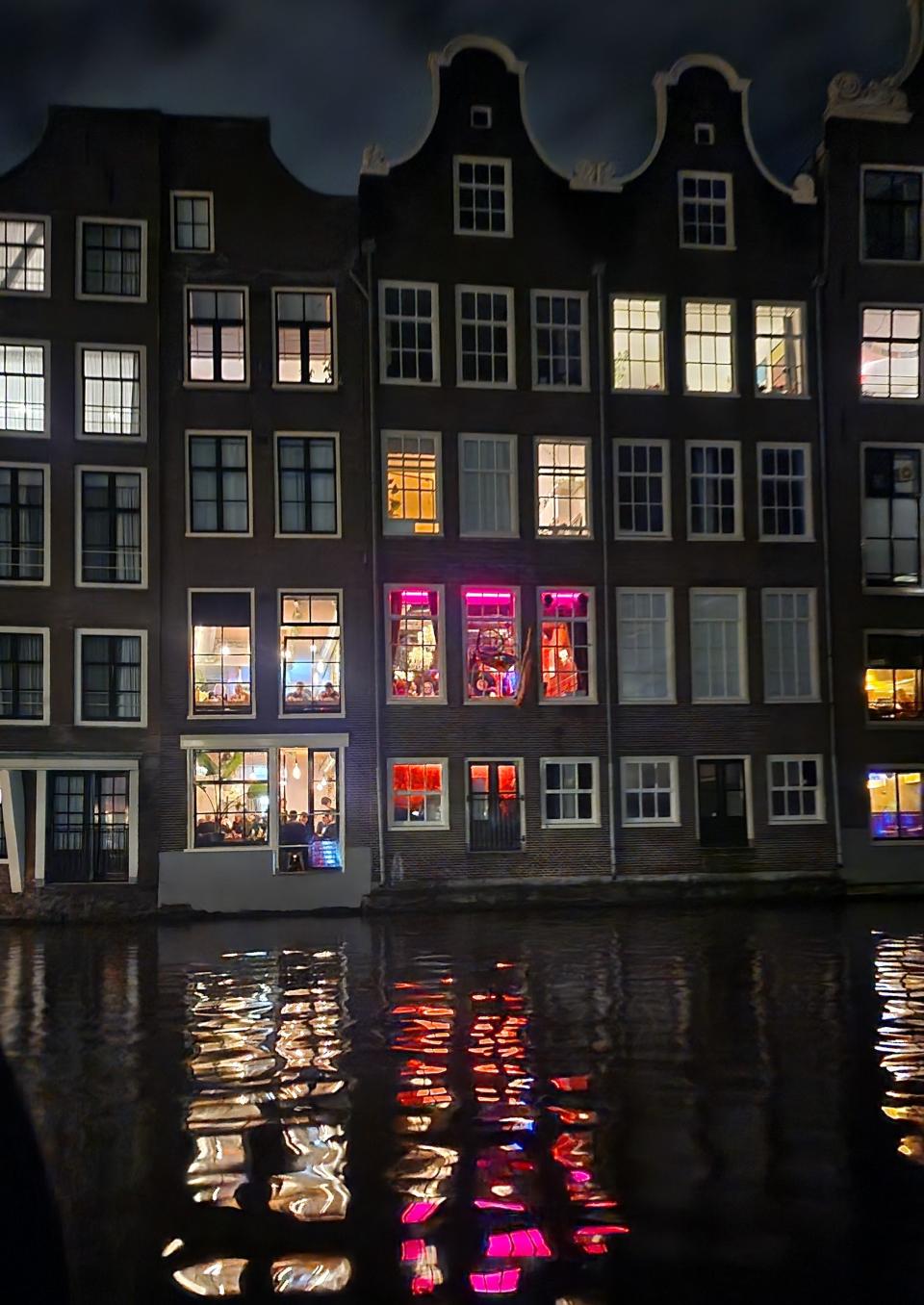
After about an hour, he pulled onto a dock and said he'd be right back. He was, with a bowl of hot bitterballen in hand. These deep fried, batter balls are filled with what they call a beef stew. But it's more like a beef, flour-based roux filling. What they are for sure is delicious, especially when dipped in a mustard sauce.
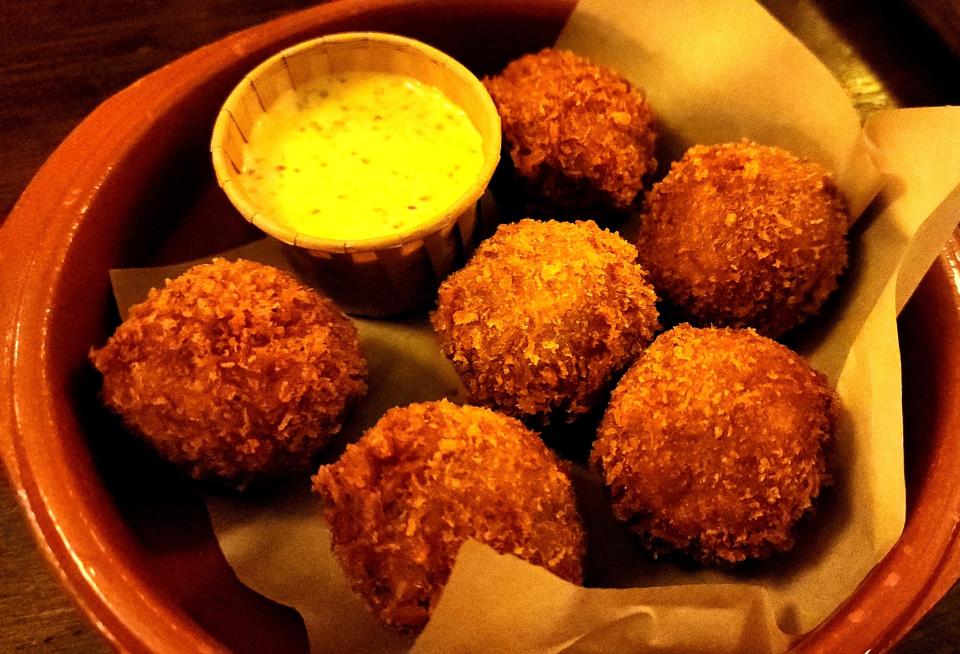
As we learned later, there is a second fried item just as popular, kroketten, or croquettes. They are the same as bitterballen but in an elongated shape. I think they taste different and I preferred the smaller bitterballen.
After the cruise, we began walking and found what looked like a nice bar called De Doffer. It's very new by Amsterdam standards. It opened in the 1970s. We learned a few things there. The young bartender asked us what size for our beers? Big or small. My husband opted for a pint but it wasn't long before we noticed many were drinking smaller beers, like the size I ordered. We asked why?
The bartender told us that Dutch drinkers like a chilled beer with effervescence. He used that word. So they'd rather drink more small beers, than nurse one pint. Lesson learned.
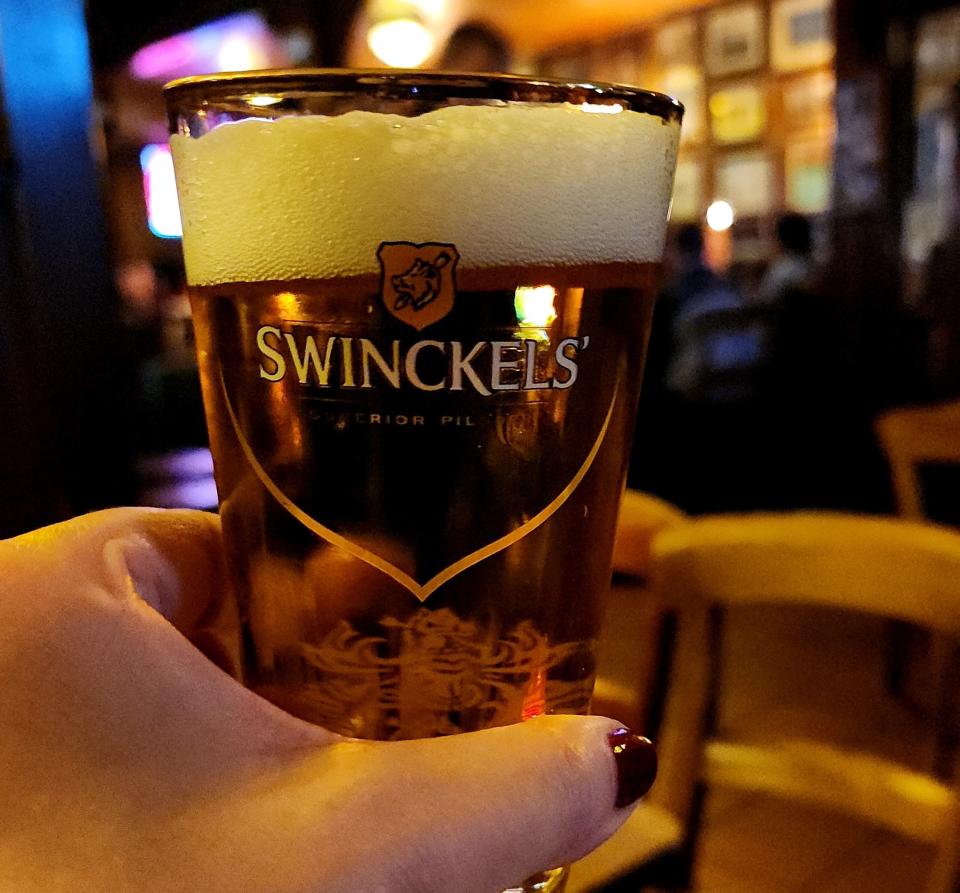
We asked if they served any food and he told us the kitchen was closed. I think it was 8:30. But he quickly added, "You can always get fried food."
Who knew food and fried food were different? So we had more bitterballen here and French fries. It turns out French fries are a big thing in the Netherlands. And they are done well and taste like potatoes. You'll find them served with different dipping sauces, from a spicy mayo to a rich peanut sauce. I'll take naked but poutine fans can revel in the saucy concept here.
Let's get back to bars. Very old bars, those dating from the 1600s, are called brown bars for all the dark wood, in Amsterdam. They are also known for a spirit of gezellig, a Dutch word for cozy and comforting. It seems many Amsterdam streets have a brown bar. They were as busy on a Monday night as on Friday. They are neighborhood gathering spots.
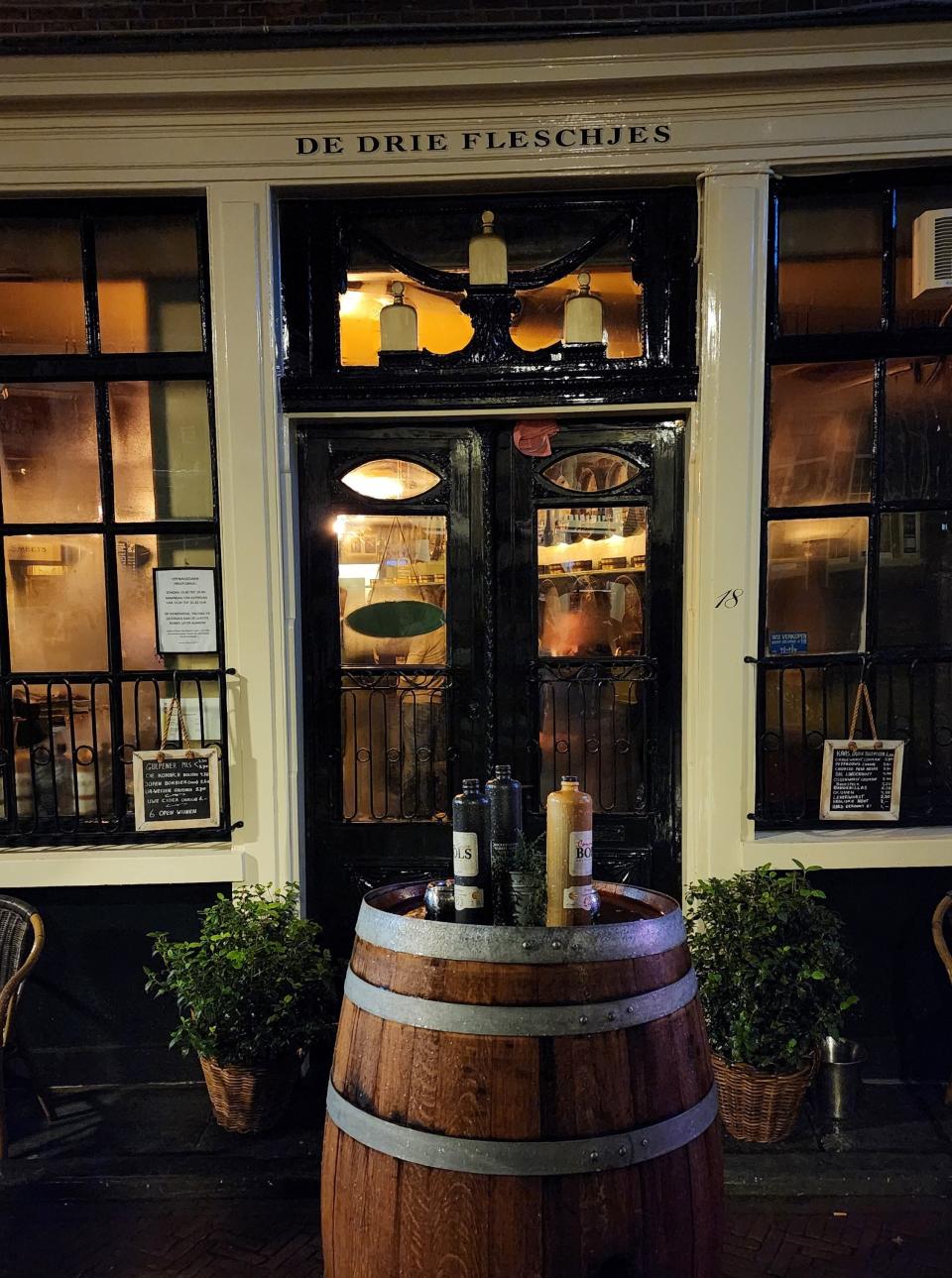
Though there are many old buildings and history in Amsterdam, it's clear the population is young. They all ride bikes. They ride in the rain and sun, though I never saw much sun. They are loaded down with bags and children. They sit perfectly straight up on bikes like the classic Columbia bikes we learned on in the 1960s. It's so elegant compared to the way bikers here lean over.
No one wears a helmet. Actually, pedestrians should wear the helmets. Because it is downright dangerous to be walking with bikes coming from all directions. Bikes rule and have taken the right of way. A cab driver told us meters for parking cars cost $8.50. The Dutch do not want people to drive but to bike or take public transportation.
Trams and buses run like clockwork to get people around Amsterdam. They make our public transportation look like cozy coupes kids use. I don't know why we can't do it right.
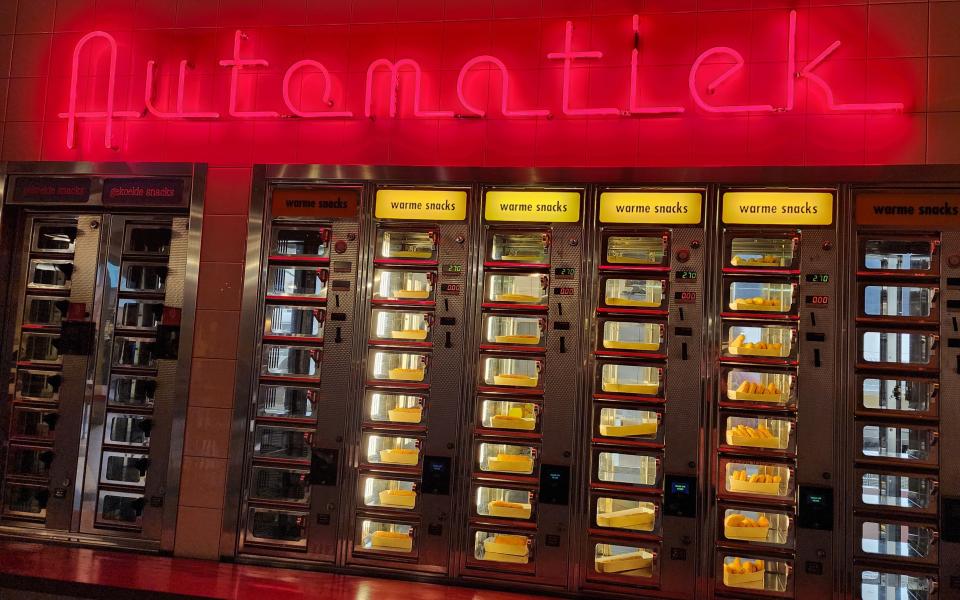
We started day two with a tram to a train station to a second train station to visit the Spoorwegmuseum in Utrecht, the Dutch national railway museum. There I saw my first automat food wall. The Netherlands has these retro fast food restaurants with rows of heated vending machines where you can grab a food item. Febo is one of the chain shops. But they had a huge one at the museum. You put money in a slot, open a little window and pull out your food. I bet you've seen them in old movies. It's fast and convenient.
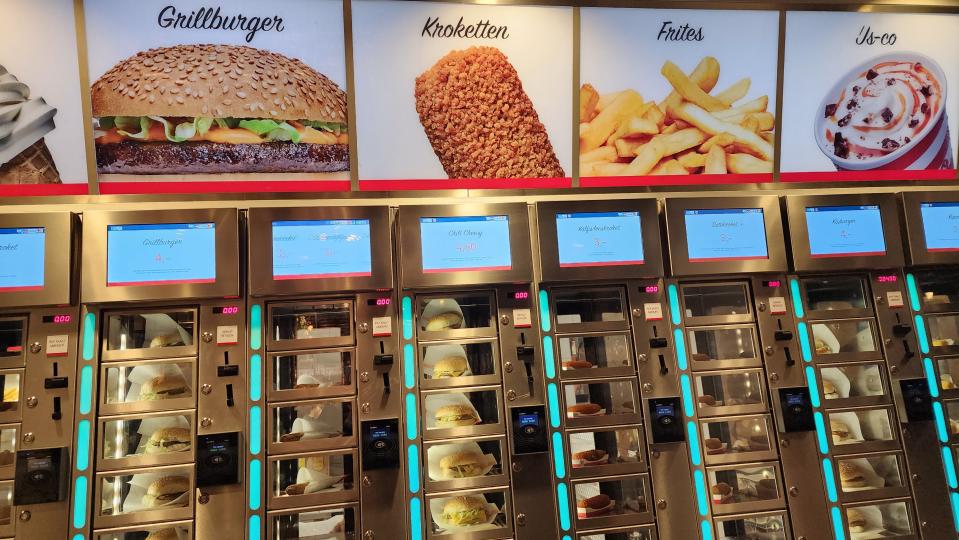
That night we took a walking food tour with some wonderful other tourists from California. It was pouring but our spirits were high and not from the "coffeeshops" which are not about enjoying coffee. They are pot cafes, not for buying but for enjoying as well.
What we loved were the cheeses. I remember being amazed by the cheese culture on my first trip to Paris last year. But I think the Dutch cheeses are every bit as delicious and enticing. We enjoyed some bunker cheese. These are aged in former drinking water bunkers. Isn't that wild?
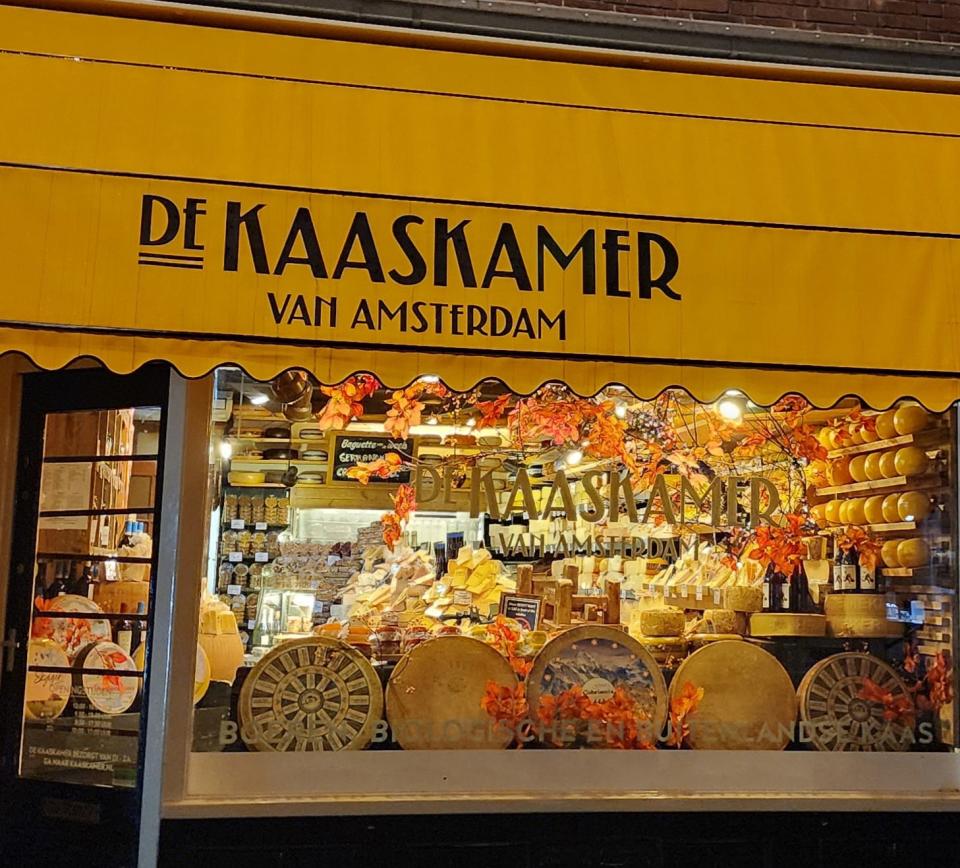
On that tour, I had my first stroopwafel and that was a revelation. We've seen this brought to America in the past 20 years but oh, they are not the same. I was shocked to see they are made not with batter, but with dough. The ball of dough is heated in what looks like an Italian pizzelle cookie maker. It's removed hot and caramel added before it is folded over as a cookie and put in a sleeve. It was a little bit of heaven.
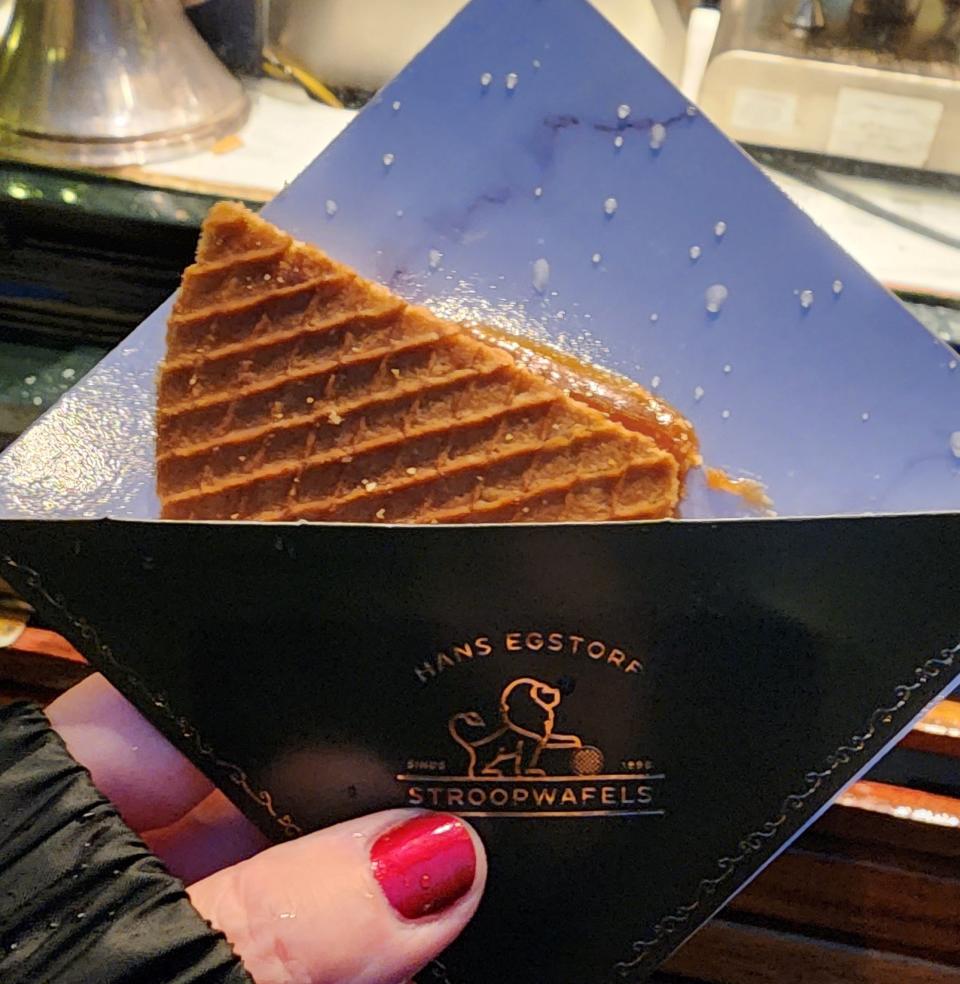
We were headed for an Indonesian restaurant when the power went out on our tram. It was the first glitch in public transportation in Amsterdam where travel is a delight. Indonesia was colonized by the Netherlands for about 350 years so you find many ethnic restaurants.
We chose to stay in the neighborhood of the last tram stop instead of taking a cab or uber. But that led us to discover some local beers. There is nothing wrong with having a Heineken in Amsterdam. The taste is almost unrecognizable from what you'd get here. It's fresh and light.
Sorting out what to do in London: Big sights and small moments make this an endearing city
But we got to try some local beers that night including Texels, a relatively new beer from a brewery that launched in 1999. It's made on the island of Texel. Apparently, this is a nice place to be as it has a sunnier climate than the rest of the Netherlands. They say you can taste the island in the barley and wheat used to brew the beers. We liked the Texels Skuumkoppe, a top-fermented dark wheat beer. But now we want to go back and visit that island and learn more about the sun in the Netherlands.
This article originally appeared on The Providence Journal: Fun foods of Amsterdam: Gail Ciampa's tasty trip in detail

